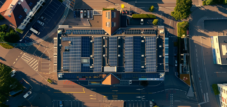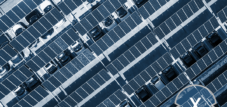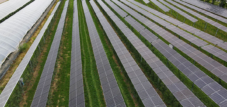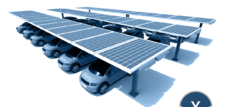Baden-Württemberg: 90% unused potential of solar systems on industrial buildings, supermarkets, shopping centers and commercial buildings
Language selection 📢
Published on: October 13, 2024 / update from: October 13, 2024 - Author: Konrad Wolfenstein
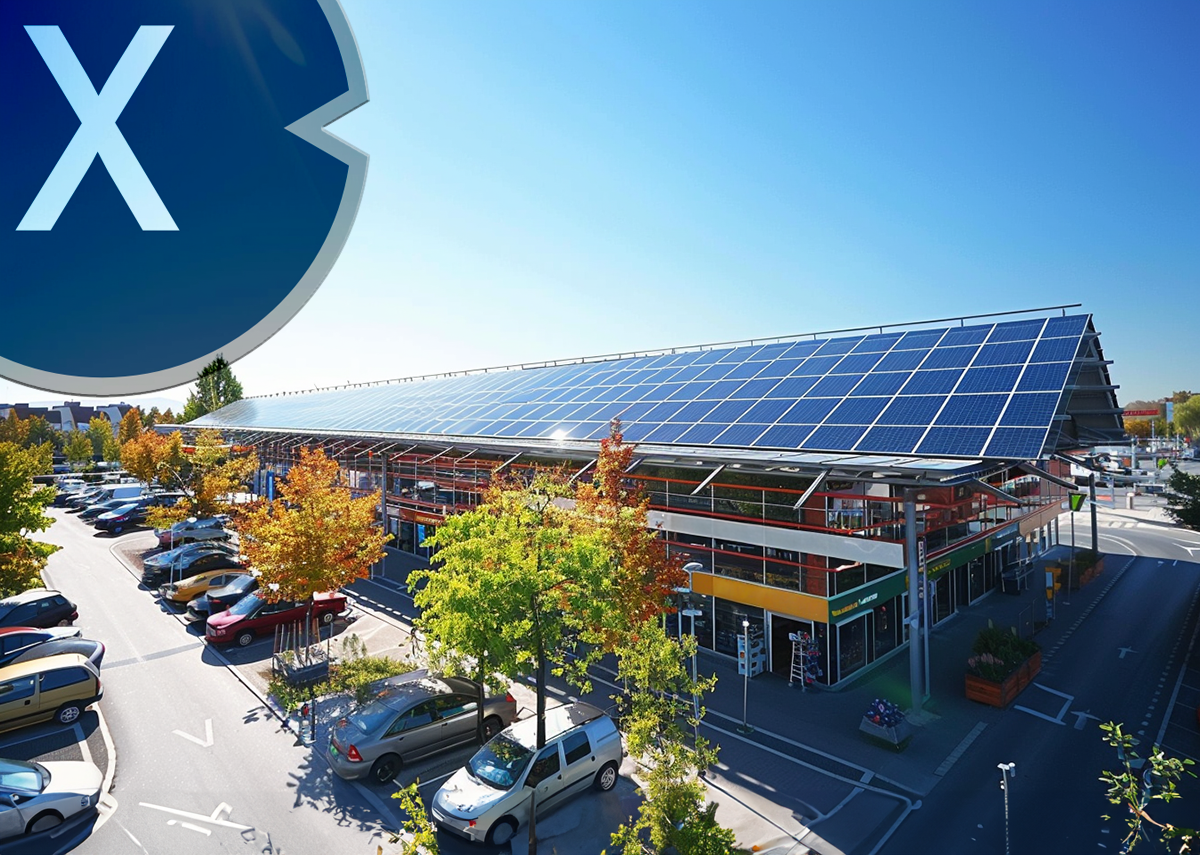
Baden-Württemberg: 90% unused potential of solar systems on industrial buildings, supermarkets, shopping centers and commercial buildings - Image: Xpert.Digital
⚠️ Why do 90% of commercial roofs in Baden-Württemberg remain without solar systems?
☀️ In recent years, the use of solar systems on private homes has experienced an impressive boom. Photovoltaic modules are already a common sight in many residential areas. However, an enormous and largely unused area remains: the roofs of industrial buildings, warehouses and supermarkets. These areas could make a significant contribution to the energy transition, but so far only around 10 percent of the available commercial roofs are equipped with solar systems. This means that around 90 percent of this potential is still unused. Why is that? What obstacles prevent the expansion of solar systems on these large areas, and what options are there to overcome these challenges?
🏠 The difference between private homes and commercial buildings
The great success of solar systems on private homes lies primarily in their easier organization and implementation. “In the case of a single-family home, the building owner and the electricity consumer are usually the same person.” This means that the homeowner himself benefits from the electricity generation and has direct incentives to invest in a solar system. The decision for a solar system is therefore relatively uncomplicated.
However, in the commercial sector the situation is more complex. Many commercial properties are not owned by the companies that use them. “The property often belongs to a real estate fund, and the manufacturing company is just a tenant in the building.” This means that at least three parties – the building owner, the tenant and the solar system operator – have to work together to install a photovoltaic system. This leads to additional negotiations and votes that can delay or even prevent the process.
🔑 Complex ownership relationships as an obstacle
The biggest obstacle to installing solar systems on commercial properties is the ownership structure. The owner of the property often has little interest in investing in solar systems because he does not derive any direct benefit from electricity generation. In addition, uncertainties about who is ultimately responsible for maintaining the system or who is liable for possible damage can make negotiations even more difficult.
Another problem is that rental agreements are often not designed to allow such use of the roof space. In order to make progress here, existing contracts would have to be adjusted and a legal framework created that enables tenants to use solar systems, even if they are not the owners of the buildings.
⚡ Network capacity challenges
Even if the ownership hurdle is overcome, the existing electricity grid represents another significant obstacle. Many of the grids available today do not have sufficient capacity to accommodate the additional electricity generated by large solar arrays on commercial buildings. “In many cases, such large systems cannot be connected to the power grid because their absorption capacities are already at their limit.”
Modernizing and expanding the power grid is a lengthy process in Germany. Approval procedures, planning and construction projects can take years. It is estimated that the full development of a regional distribution network can take up to 10 years. During this time, many potentially profitable projects remain unused, even though they are technically feasible.
🗺️ The role of distribution network operators
Germany has a particularly complex structure when it comes to the electricity grid. There are around 850 distribution system operators, each of which has its own rules and regulations regarding the use and feed-in of electricity. This multitude of different regulations makes it difficult to standardize processes and leads to uncertainty for companies that want to install solar systems. An operator in one region may have different requirements than an operator in another region, making the planning and approval processes longer and more expensive.
💸 High initial investment and financing
In addition to the infrastructural and legal hurdles, the high initial investment is another reason why solar systems are less common on commercial properties. While there are now attractive support programs and financing options for private households, comparable incentives for commercial real estate are often not sufficient.
Although there are government subsidies, the uncertainties surrounding the payback period and potential returns deter many investors. Commercial solar installations require a significant upfront investment, and without sufficient assurance that the system will generate long-term profits, many companies are reluctant to commit these funds.
🌱 Opportunities and solutions
Despite these challenges, there are many approaches to better exploit the potential of solar systems on commercial buildings. A promising option is the so-called “lease model”. In this model, the building owner leases the roof space to an investor or a solar system operator. This takes care of the installation and operation of the system, while the tenant uses the electricity generated or sells it to the grid. In this way, the building owner does not have to make a large initial investment and the tenant benefits from cheap solar power.
In addition, simplified approval procedures and uniform regulations for distribution network operators could help accelerate the expansion of solar systems on commercial buildings. Standardized processes and clearly defined responsibilities would make it easier for those involved to implement projects more quickly.
Another promising model is the combination of solar systems with battery storage. Since grid capacity is often a limiting factor, locally generated electricity could first be temporarily stored in battery storage and then used when needed. This would reduce dependence on the electricity grid and give companies more flexibility in using the electricity generated.
🌍 The importance of the energy transition
The importance of using solar energy on commercial rooftops cannot be understated. Given the global climate crisis and rising energy costs, the use of renewable energy is a crucial step towards a sustainable future. Industrial buildings, supermarkets and warehouses offer enormous amounts of space that can be used to generate large amounts of clean energy. These could make a significant contribution to reducing CO₂ emissions and reducing dependence on fossil fuels.
However, in order to fully exploit this potential, closer cooperation between politics, companies and network operators is required. Only through joint efforts can the legal, infrastructural and financial hurdles be overcome.
✅ Solar systems on commercial buildings in Baden-Württemberg
Solar systems on commercial buildings offer enormous, largely untapped potential. The challenges are diverse, from complex ownership relationships to limited network capacities to high investment costs. Nevertheless, there are promising solutions such as leasing models, battery storage and standardized approval procedures. With the right political support and companies' willingness to invest in renewable energy, this potential could be better exploited in the coming years. Solar systems in warehouses and supermarkets could become an important component of the energy transition in Germany.
📣 Similar topics
- 🌱 Untapped potential: 90% of commercial roofs in Germany without solar systems!
- 🏢 Solar systems on commercial properties: Where is the great progress?
- 🔋 Photovoltaics on industrial buildings: obstacles and opportunities in focus!
- 🚧 Complex ownership relationships: The biggest hurdle for solar systems?
- ⚡ Challenges of network capacity: Why does so much potential remain unused?
- 💰 High investment barriers: Financing solar projects on commercial roofs
- 🔍 Lease models as a solution: This is how commercial properties can benefit!
- 🌍 Energy transition in Germany: The role of solar energy on commercial buildings
- 📊 The difference between residential buildings and commercial buildings: A look at the funding
- 🤝 Collaboration between politics and companies: The key to using solar systems!
#️⃣ Hashtags: #solar energy #energy transition #commercial spaces #sustainability #photovoltaics
We are there for you - advice - planning - implementation - project management
☑️ Industry expert, here with his own Xpert.Digital industry hub with over 2,500 specialist articles
I would be happy to serve as your personal advisor.
You can contact me by filling out the contact form below or simply call me on +49 89 89 674 804 (Munich) .
I'm looking forward to our joint project.
Xpert.Digital - Konrad Wolfenstein
Xpert.Digital is a hub for industry with a focus on digitalization, mechanical engineering, logistics/intralogistics and photovoltaics.
With our 360° business development solution, we support well-known companies from new business to after sales.
Market intelligence, smarketing, marketing automation, content development, PR, mail campaigns, personalized social media and lead nurturing are part of our digital tools.
You can find out more at: www.xpert.digital - www.xpert.solar - www.xpert.plus







